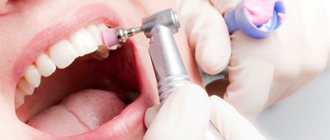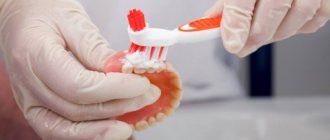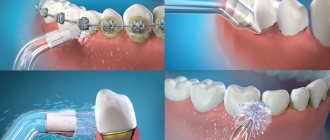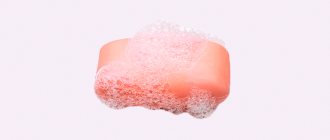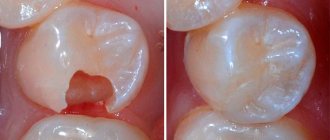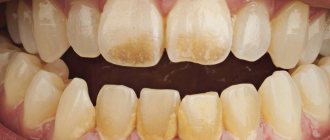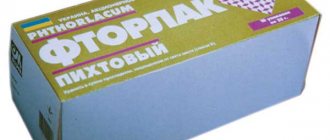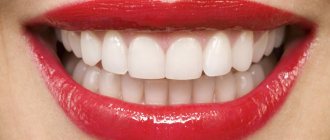An irrigator is a device designed for performing oral hygiene procedures. Its difference from other means is the removal of old plaque and dirt using water under pressure. This item is relevant for patients with braces and other permanent inserts who find it difficult to clean teeth in hard-to-reach places. If you are interested in purchasing an irrigator, you can find a large assortment of these devices at this link.
How to clean the inside of an irrigator
The hygiene product cannot be placed entirely in water, but it must be washed regularly from the inside. Pathogenic bacteria can accumulate in the reservoir, which at some point can penetrate the oral cavity and cause inflammation. Therefore, many device owners must keep the tank clean. In order for the device to serve for a long time and be safe, you need to carefully wash the inner surface with a gentle cleaning agent - soda, chlorhexedine or vinegar. It is necessary to carefully clean and rinse the inside of the tank after cleaning, and also take care of the external surfaces.
Causes of pollution
Deposits inside the irrigator form for several main reasons:
- Poor water quality. Limescale and scale appear in the device especially quickly when using tap liquid. But even filtered water contains a small amount of hard impurities. If not cleaned, the latter will lead to the formation of hard deposits in the reservoir and on the nozzles of the device.
- Constantly increased humidity inside the device. If you do not clean and dry the irrigator after each use, then over time mold may form on its walls in hard-to-reach places. Fungus appears especially often if plain water or herbal infusions are used for oral care, rather than special antiseptic liquids.
- Poor quality cleaning products for teeth and gums. Herbal decoctions prepared at home and cheap antibacterial solutions are poorly washed out of the internal parts of the irrigator and remain on its walls. Over time, a dense coating begins to form, which can only be removed by special cleaning.
Rules for caring for an irrigator at home recommend thoroughly rinsing the device after each use and regularly disinfecting the nozzles.
Is it possible to clean mold from an irrigator?
It is simply necessary to clean the surface of fungus, since this type of contamination can cause irreparable harm to a person during use. Cleaning can be done using baking soda, peroxide and table vinegar. The advantages of such products are not only their low cost, but also their functionality - they cope well with mold without harming the device. You need to clean the irrigator from the outside and inside - you need to thoroughly wipe the outer surface with a sponge soaked in the substance, then wipe with a brush all hard-to-reach places and joints of elements.
It is imperative to wash the inside of the device, as otherwise mold may enter the human body. It is necessary to make a solution of soda, vinegar, or antiseptic, turn on the device, place the handle in the sink or bathtub and thus rinse the surface several times, first with a cleaning agent, then with water. In some cases, complete disassembly of the device is necessary if mold has completely affected the surface.
Why do you need to clean your irrigator?
During use, the irrigator for teeth and gums is constantly in contact with water, chemicals and herbal compounds. Sooner or later, hard deposits, plaque, and in some cases mold appear on its internal surfaces.
If you do not regularly clean the device, the stream pressure in the irrigator will quickly weaken. When scale accumulates on metal parts, the unit will begin to overheat and eventually simply burn out.
Plaque particles accumulated in the irrigator can enter the mouth along with the liquid and cause inflammation
Cleaning the WaterPik irrigator
Cleaning the device is somewhat different from washing regular dishes. Since the device is electric, it cannot be completely immersed in liquid. If necessary, you can disassemble the item into parts and wash each part separately. If the contamination is minor, just fill the tank with warm water to the maximum mark, lower the spout into the bathtub or sink and turn on the device, wait until all the water drains out. If the contamination is serious, such as mold or scale, you need to add special cleaning agents and disinfectants, then remember to rinse with clean water.
Unconventional methods
I found interesting information on the Internet that carbonated drinks (such as Coca-Cola, Pepsi or Sprite) are another option for cleaning the irrigator from scale. Reviews claim that the effect is stunning. I don't think I'll try this myself. If the scale is cleared, then you will have to wash the device from Sprite, so as not to brush your teeth with sugar-containing liquids. Somehow I don’t trust such harmful drinks to take care of such a useful irrigator. In addition, citric acid and vinegar are cheaper and more convenient.
Stages of cleaning an irrigator with vinegar
Vinegar is one of the cheap products that will thoroughly clean the surface of the irrigator without harming it. Despite the fact that this substance smells unpleasant, a strong aroma remains for some time, it is one of the safest substances for humans when used correctly. To clean a contaminated surface, soak a sponge or rag in vinegar and wipe the tank and surfaces clean. When working, you should wear gloves only, protecting your respiratory organs. Vinegar is used to combat fungi that are dangerous to human health. It is necessary to start fighting mold in the irrigator - using such an item is unacceptable, harmful bacteria can enter the oral cavity and cause various diseases. Author of the article: Vsevolod Bobrenkov (stommarket.ru)
Precautions when using the irrigator
Although the developers of Waterpik irrigators have included in the design all the necessary elements to protect against possible electric shock and ensure maximum safety, we still recommend paying attention to some points and be sure to explain them to children. Basically, the safety precautions for using electrical devices are the same:
- Do not touch the charger with wet hands.
- Do not immerse a live device in water or any other liquid.
- Carefully monitor the condition of the cord - mechanical damage and exposed wires are not allowed.
- Do not use while in the bath or shower unless directed to do so.
- Store it only in places from which it cannot accidentally get into the aquatic environment.
- Do not try to immediately get the waterpik if it falls into the water. Be sure to unplug it first.
- Do not throw the device, keep it away from heating devices.
Do not use mouthwashes containing iodine or bleaching solutions. For effective cleaning, use a special cleaning agent for the irrigator.
Call us and get advice on how to properly and comfortably care for your teeth and oral cavity!
Author of the article
How to treat the oral cavity
Before starting the procedure, you need to use a toothbrush, using it to remove large particles of food, and only then use an irrigator. The device is not able to replace mechanical treatment of the oral cavity; its purpose is to provide hygiene at the maximum level. The cleaning process itself should take about 15 minutes, this time is enough to complete the task of cleaning the oral cavity from bacteria, plaque and food debris.
While the device is operating, it must be held at right angles to the area being treated, directed from top to bottom, not forgetting that the gums hug the tooth.
It is necessary to start cleaning the oral cavity with the lowest pressure, gradually increasing it, thus giving the gums and teeth the opportunity to adapt.
Cleaning the oral cavity should begin with the front teeth of the lower and upper jaw, gradually moving to the rear teeth, giving them a little more time, since a regular brush does not always cope with its function in this area, and most of the food debris and harmful microbes collect there.
What will you need for this?
Cleaning an irrigator at home begins with choosing the products that can be used during the work process. All of them are divided into specialized chemicals and safe compounds available in every housewife’s kitchen. Each of these options deserves special attention.
Available means
In the fight against scale and mold on the internal surfaces of the irrigator, well-known substances are used.
- Vinegar. It helps to disinfect metal elements and effectively destroys mold and mildew. For rinsing, use a solution of 7% vinegar in a volume of 100 and 400 ml of water.
- Lemon acid. The best home remedy for scale. You can use a concentrate of lemon juice and 500 ml of water, or dissolve 25 g of a powdered substance used in cooking in the same volume of liquid.
- Baking soda. Another descaling agent that has an additional disinfectant effect. 1 tablespoon of powder is dissolved in 0.5 liters of water.
You should not follow recommendations that suggest pouring sweet carbonated water inside the device. Such a composition will lead to failure of the irrigator.
Special solutions
Specialized products for cleaning irrigators can be purchased at medical equipment stores and pharmacies. The most popular are formulations from the brands Revyline and Doctor Elephant. The products effectively fight scale and prevent engine overheating.
For disinfection, you can use medical solutions: chlorhexidine, hydrogen peroxide.
Oral irrigator - what is it and how to use it
One of the factors influencing health is hygiene, which should not be forgotten even in conditions where compliance with the main rules is difficult. For example, when traveling, it is not always convenient to perform sanitary procedures, among which oral hygiene is not the least important.
Along with toothbrushes, toothpastes and floss, you can increasingly see new technologies. An oral irrigator successfully replaces dental floss. To understand what it is and how to use an oral irrigator, you can familiarize yourself in more detail with its operating principle and selection rules.
What is it needed for
This is a device that allows you to remove food debris from hard-to-reach areas of the interdental space, as well as the gums and inner surfaces of the cheeks. The operation of the device is based on knocking out the smallest food residues with a powerful stream of water.
Each irrigator comes with a set of attachments that perform a specific function. For ease of use, the device has an adjustable water jet pressure, which is very convenient for a child to use (up to 6 speeds).
Indications
- Bad breath.
- The device is considered a preventive measure for caries and other diseases of the teeth and gums, both in adults and children. When using an irrigator with a child, it is important to teach him to set the soft mode, which will not cause discomfort, but will perform its task perfectly.
- For the treatment of certain inflammatory dental diseases.
- As a result of smoking, blood circulation in the gums is impaired, which causes inflammation. Therefore, it is advisable for smokers to use the device regularly.
- Decreased immune system.
- For people suffering from periodontitis, using an irrigator will help get rid of food debris in the gum pockets, which cause inflammation.
- The presence of periodontal disease, when there is mobility and bleeding of the gums, the use of an irrigator is prescribed by the doctor. The procedure allows you to perform a gentle massage of the gums and rinse all hard-to-reach places and intergingival pockets.
Contraindications
- In the acute stage of periodontal disease, the use of the device is not recommended.
- Children under six years of age.
- Dental operations that have been recently performed.
- The presence of dentures or braces is also a contraindication.
- In any case, it is necessary to consult a doctor who evaluates the condition of the oral cavity and teeth.
Types of irrigators by type
Portable (portable)
Product volume up to liter. The device is powered by a rechargeable battery. As a result of regular use, it can last at least a week without interruption.
Among the advantages of this type of model, it is worth highlighting its mobility. If desired, you can take it on a trip or to the country.
The disadvantages include the need to turn the device over during operation. This can be explained by the fact that there is no required power for a certain jet pressure.
Stationary
Among the types of devices, there are stationary options that operate from the network. To perform the task, it must be connected to a regular outlet. When planning to buy an irrigator from American manufacturers, it is worth considering the fact that it will require a 110V network, as well as the presence of an adapter.
It is convenient to place the device in the bathroom, having previously secured it on a vertical surface.
There are models whose volume ranges from 0.5 liters to 2 liters. Continuous operation can last up to one and a half minutes.
Manufacturers offer both autonomous models into which water is poured, and those in which water is supplied from a tap.
Some models are equipped with additional functions that allow ozonation, which increases the antibacterial effect and whitens teeth.
According to the operating principle
With microbubble function
This feature is considered an innovation. As a result of the operation of the device, which is equipped with an air pump, the medicine is saturated with air bubbles.
Pulse
Water hits the teeth in the form of short, powerful pulses that perfectly clean out food debris.
Jet
During operation of the product, water is sprayed onto the surface of the teeth.
A little about attachments
- To remove food debris in the most difficult to reach places, use a standard nozzle with a blunt end.
- You can effectively clean your gums and gum pockets using a periodontal brush.
- For fixed orthodontic structures, there is an orthodontic attachment that resembles a brush.
- It is convenient to clean your tongue using a special nozzle.
What to fill with
Modern manufacturers produce a wide range of balms for irrigators, which are divided into medicinal liquids and universal ones.
You should buy such a liquid only after consulting a doctor first, so as not to damage the enamel.
Anti-bleeding
You can reduce the risk of periodontitis and strengthen your gums with a special liquid. Stop using it if inflammatory foci appear.
For allergy sufferers
If you are sensitive to certain drugs, there are hypoallergenic liquids that provide reliable protection and do not cause unpleasant situations.
Unpleasant smell
Deodorizing products that increase the effectiveness of the device can be used in case of bad breath; they freshen the breath.
Whitening effect
If the goal is to whiten your teeth, you can give preference to a balm that brightens tooth enamel and makes your breath fresh. The problem is especially relevant for smokers and coffee lovers.
How to choose the best device
- When planning to purchase an irrigator, you should understand that this device is not cheap, so you need to take the choice seriously.
- Under no circumstances should you make a purchase on the market or by hand. Otherwise, there is a risk of buying a fake, or even a defective device.
- When purchasing, you should inquire about the availability of a quality certificate.
- A quality product must have a warranty period of at least two years.
- The product must have at least two attachments. But the more additional features, the better.
- You should also ask your sales consultant about the level of savings of the device.
- Equally important is information about a service center, where you can not only repair the device in case of malfunction, but also buy components for it.
How to choose a model by pressure
When choosing a device, it is very important to take into account the pressure adjustment, which is necessary to adjust the process of cleaning the oral cavity, for medical reasons or at your own request.
Review of the best irrigators
Quality + availability Aquajet LD-A7
Among the stationary models, it is worth highlighting the Aquajet LD-A7 brand. It is distinguished by its favorable price and many advantages, not least of which is the presence of a special wall mount. The device operates for 10 minutes.
Reliable Waterpik WP-100 Ultra
The undoubted advantages of the irrigator include the many attachments included in the kit. Several jet modes, which is very convenient if there are children in the house. The device operates almost silently.
But such pleasure will not come cheap. In addition, it does not have an attachment to a vertical surface.
Lightweight Donfeel OR-82OD Compact
Among the many devices with microbubble technology, one can highlight Donfeel OR-82OD Compact, which will become an indispensable assistant during a trip or travel. It has two jet flow modes, very convenient and lightweight. The battery lasts at least 12 days.
Professional Oral-B Profession Care OxyJet +3000
The device includes not only an irrigator, but also an electric brush. The high German quality of the device justifies the high cost. Oral-B is suitable for use by the whole family and has ten compartments for storing numerous attachments. The multifunctional device is one of the best of its kind.
Does it replace a toothbrush?
It is worth noting that the device does not replace a toothbrush, but is recommended as an additional device for oral hygiene. Experts do not recommend using it every day. But when wearing braces, it is more effective at removing food debris than a toothbrush.
What to do if the irrigator is clogged
If the device becomes clogged during operation, it should be cleaned, taking into account the basic rules.
To ensure uninterrupted operation of the irrigator, it is important to care for it after each procedure.
- The device is turned off from the power source and the remaining liquid is drained.
- Fill the container with water and rinse it.
- Removable attachments should be rinsed under running water and dried perfectly.
To descale the appliance, you need to fill the tank halfway with a weak hot solution of citric acid and let it sit for a few minutes. After this, rinse with warm water and dry. And in the future, fill it only with filtered water.
For implants
In this case, there are special irrigators for implants that can fight microorganisms much more effectively than a toothbrush and floss.
It is especially worth paying attention to Aquajet irrigators, which are designed to clean the surface of various structures, including braces.
Another popular model is the B Well WI-911, which you can take with you on the road. It effectively removes food debris from hard-to-reach places and is battery powered.
Source: https://o-polze.com/irrigator-polosti-rta-chto-eto-takoe-i-kak-im-polzovatsya/
How many times a week can you use the device?
Depending on the goals pursued by the owner of the irrigator, the use of the device as a prevention of diseases, such as stomatitis, periodontal disease, oral hygiene or the treatment of a specific disease, determines the frequency of its use.
For therapeutic purposes, the frequency of use of the device is determined by a specialist individually. In cases where there is a desire to increase the level of cleanliness of teeth and gums, it is enough to use the device up to 4 times a week.
What to put in the container: water or products
All types of liquids that are allowed to be poured into irrigators are indicated in the operating instructions for each device. Some products are strictly prohibited from being used in these devices.
Liquid for irrigator - TOP 8
